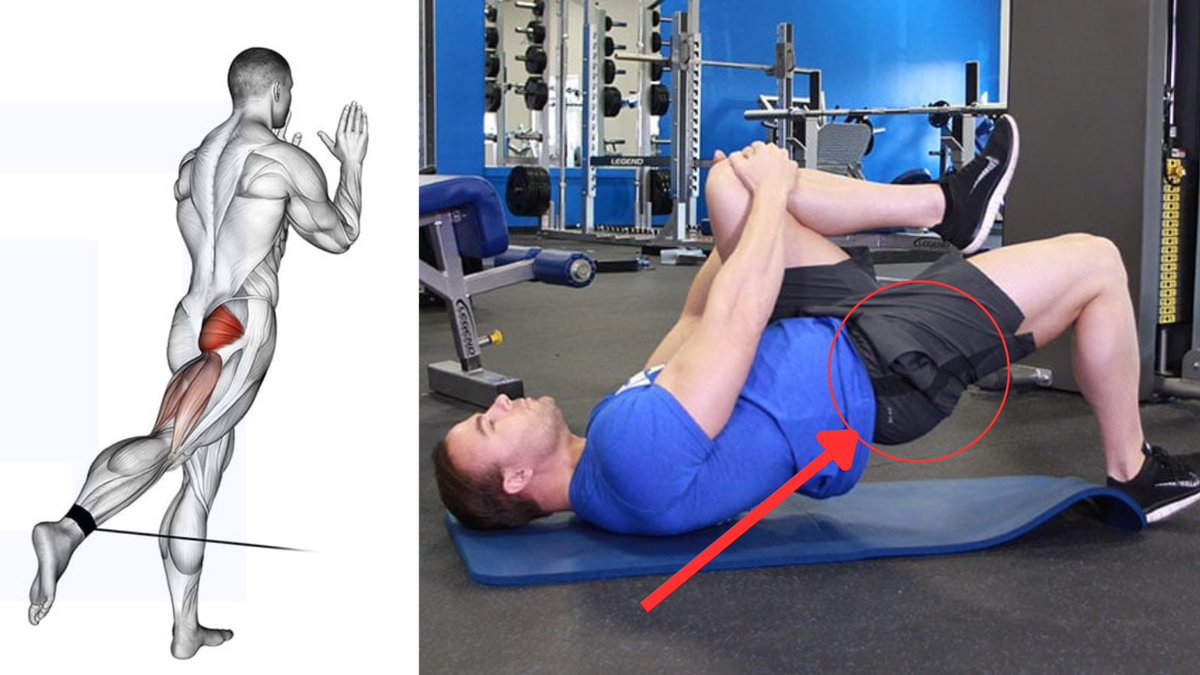A thread on the biomechanics of the Front Rack position and how to improve your mobility for it
The Front Rack position can be really challenging for some people because it requires maintaining around 90 degrees of shoulder flexion under load (Levangie, 2010).
To improve the..
The Front Rack position can be really challenging for some people because it requires maintaining around 90 degrees of shoulder flexion under load (Levangie, 2010).
To improve the..
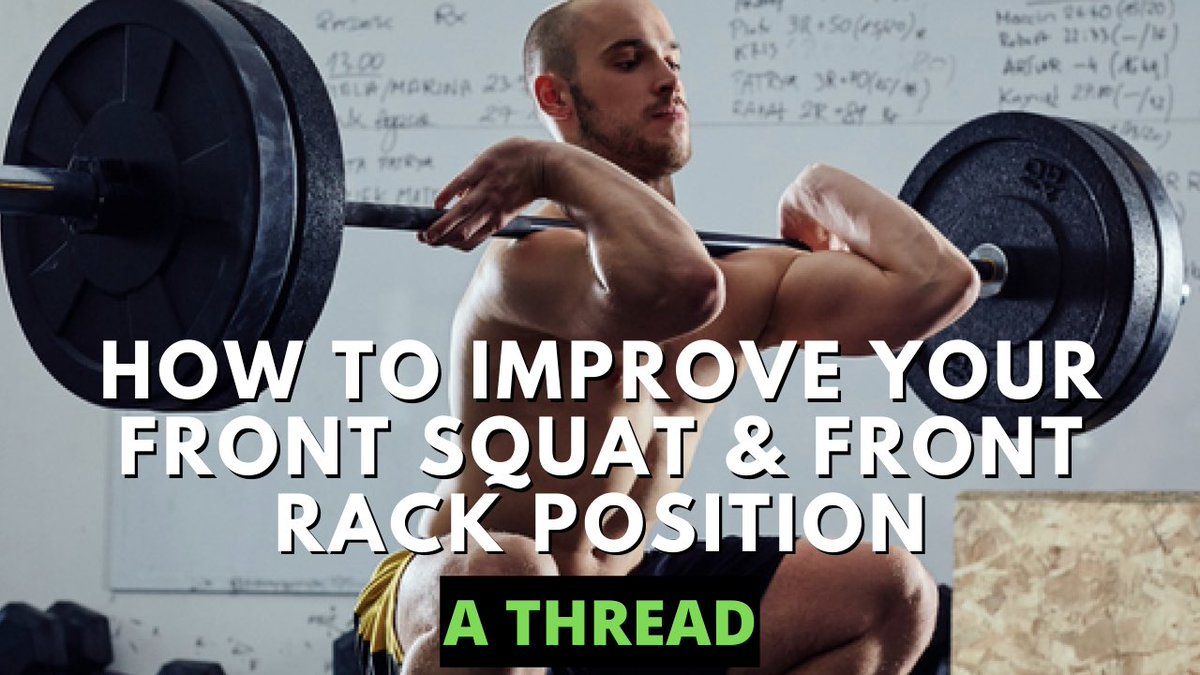
mechanics of this position, let’s understand what’s happening:
Beyond around 60 degrees of shoulder flexion, the scapular external rotator muscles need to work harder to get the arm overhead due to the progressive upward rotation of the scapula (Neumann, 2016).
Beyond around 60 degrees of shoulder flexion, the scapular external rotator muscles need to work harder to get the arm overhead due to the progressive upward rotation of the scapula (Neumann, 2016).
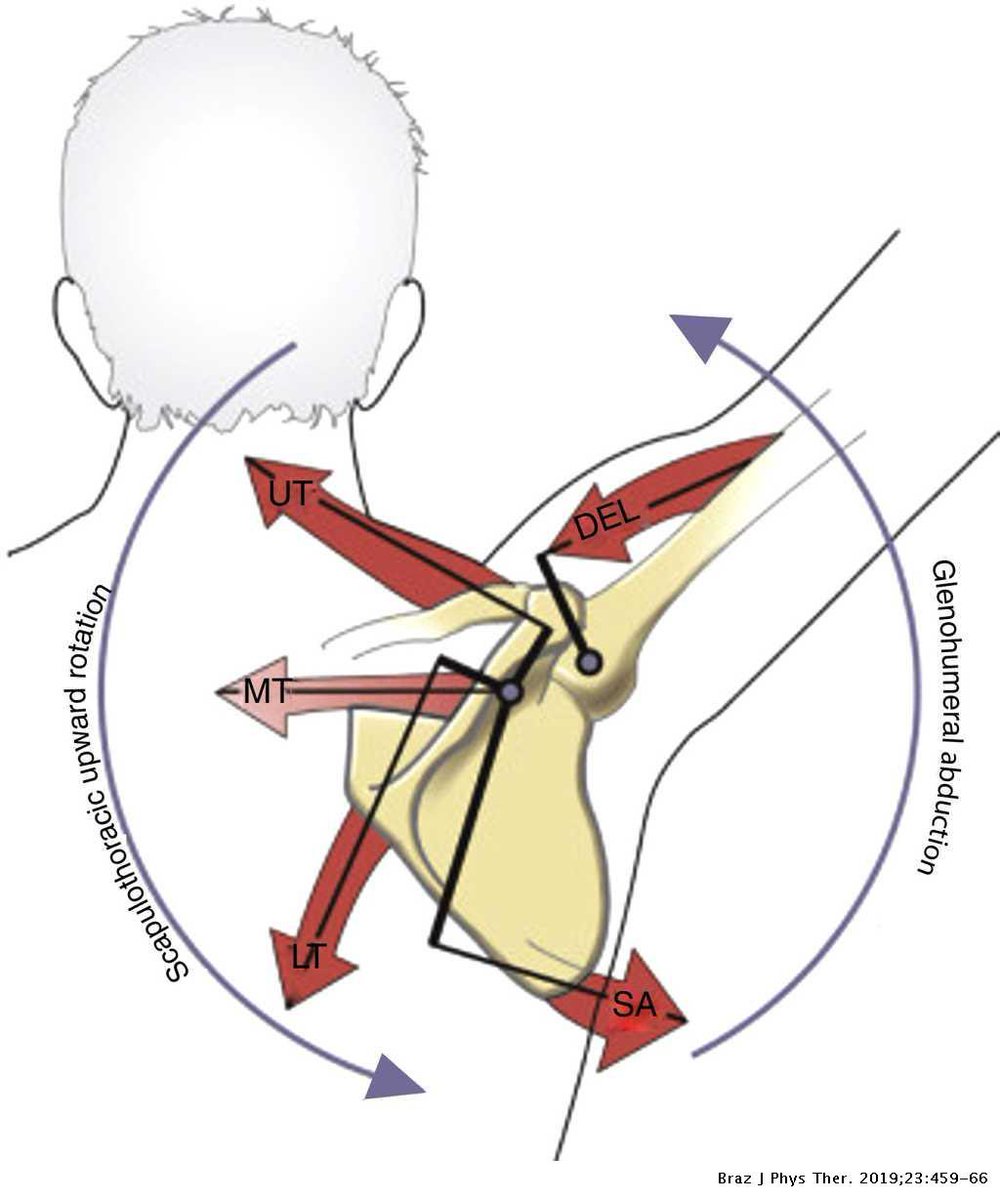
This means that the Serratus Anterior, Upper and Lower Traps all need to work together to accomplish this.
The Rhomboids, Lats and Pecs need to let go and relax.
This is often the part that is challenging for people.
The Rhomboids, Lats and Pecs need to let go and relax.
This is often the part that is challenging for people.
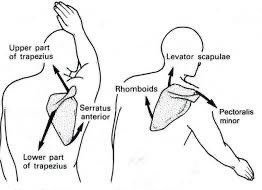
Many people struggle with tight lats and upper back, so once you place a load on their system, they want to use those muscles, but they need them to relax to a degree in order to keep the elbows up.
A bit of a catch-22.
What I often see as a compensation is excessive upper back
A bit of a catch-22.
What I often see as a compensation is excessive upper back
extension in an attempt to keep their elbows up, but this often results in a pelvis that is too far forward and that is going to bias the low back to work more and abs to work less.
However, this will be necessary to a degree in a ballistic power exercise like a clean.
However, this will be necessary to a degree in a ballistic power exercise like a clean.
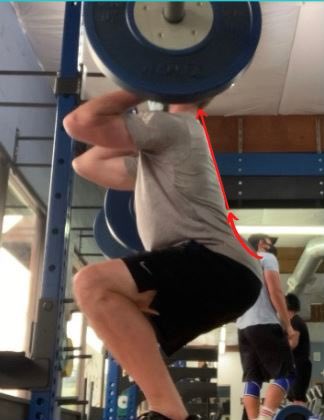
That excessively arched and internally rotated position actually prevents the pelvis from opening back up into external rotation to allow for a deeper squat position.
Below is a more “neutral spine”, but requires those previously mentioned muscles to let go.
Below is a more “neutral spine”, but requires those previously mentioned muscles to let go.

To test your shoulder flexion, keep your ribs down in the front and make a bicep curl.
Keep the elbow perfectly straight ahead and once you feel like it needs to turn “out”, you’re at end range.
If you can’t get past 120 degrees, you’re very likely compressed in your back ribs.
Keep the elbow perfectly straight ahead and once you feel like it needs to turn “out”, you’re at end range.
If you can’t get past 120 degrees, you’re very likely compressed in your back ribs.
To decompress that area, I like to use an exercise like this.
Try this and then re-test your shoulder flexion.
Try this and then re-test your shoulder flexion.
To allow the lats to let go and get even more overhead mobility, try this, then re-test.
Finally, a quick tip I love to share is that where there is heavy amounts of compression in the back ribs, the triceps tendon tends to get stiff.
This also limits mobility, so grinding the hell out of it on a bar before you get into the front rack position can be really helpful.
This also limits mobility, so grinding the hell out of it on a bar before you get into the front rack position can be really helpful.
• • •
Missing some Tweet in this thread? You can try to
force a refresh





